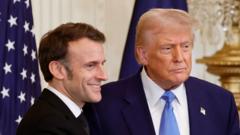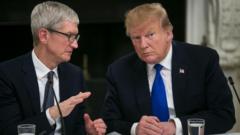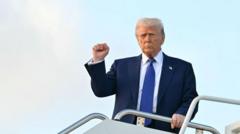The agreement between Ukraine and the U.S. centers around access to Ukraine's valuable mineral resources, with broader geopolitical ramifications in the ongoing conflict with Russia.
US-Ukraine Minerals Agreement: Key Details and Implications

US-Ukraine Minerals Agreement: Key Details and Implications
Ukraine strikes a rare earth minerals deal with the U.S., raising questions about security guarantees and geopolitical implications.
The prospects of a minerals deal between Ukraine and the United States have taken a significant turn, as initial discussions between Ukrainian President Volodymyr Zelensky and former U.S. President Donald Trump have culminated in a preliminary agreement. The outlined deal aims to provide the U.S. access to Ukraine’s rare earth mineral deposits and entails the establishment of a joint investment fund for reconstruction projects in the war-torn country.
Ukrainian Prime Minister Denys Shmyhal expressed optimism about the finalized agreement, which reportedly allows both nations to manage the investment fund equally. Ukraine would contribute half of the revenue generated from its state-owned mineral resources to fund various initiatives necessary for recovery and development. The deal has faced scrutiny, particularly around the financial terms, as initial revenue demands from Ukraine have reportedly been revised down.
Despite the positive outlook from Kyiv, it remains unclear how this agreement intertwines with security guarantees that Ukraine needs to ensure its protection against further Russian aggression. Shmyhal noted that signing the deal is contingent on a satisfactory resolution regarding these security assurances from the U.S. government. Notably, discussions around security have become even more critical, given the potential for renewed hostilities in the region.
While the U.S. has pledged substantial financial assistance to Ukraine throughout the ongoing conflict, quantifying this financial aid continues to be contested. Trump indicated that the deal would be a way to "get taxpayer money back," but recent analyses suggest that the figures he cited lack concrete verification.
On the minerals front, Ukraine is home to a significant portion of the world’s critical raw materials, including graphite, titanium, and lithium. This makes the country a key player in supplying material essential for technologies like electric vehicle batteries and military equipment.
Responses from Russia have been muted but suggest a focus on its own mineral resources. President Vladimir Putin claimed that Russia possesses greater mining resources than Ukraine, subtly indicating a continued competitive posture in light of the U.S.-Ukraine deal.
Moving forward, the timing of the deal’s official signing, scheduled for this week, remains pivotal for both countries. As Ukraine navigates its path towards sustainability and security, the parameters of international deals such as this one will significantly influence the broader geopolitical landscape.
Ukrainian Prime Minister Denys Shmyhal expressed optimism about the finalized agreement, which reportedly allows both nations to manage the investment fund equally. Ukraine would contribute half of the revenue generated from its state-owned mineral resources to fund various initiatives necessary for recovery and development. The deal has faced scrutiny, particularly around the financial terms, as initial revenue demands from Ukraine have reportedly been revised down.
Despite the positive outlook from Kyiv, it remains unclear how this agreement intertwines with security guarantees that Ukraine needs to ensure its protection against further Russian aggression. Shmyhal noted that signing the deal is contingent on a satisfactory resolution regarding these security assurances from the U.S. government. Notably, discussions around security have become even more critical, given the potential for renewed hostilities in the region.
While the U.S. has pledged substantial financial assistance to Ukraine throughout the ongoing conflict, quantifying this financial aid continues to be contested. Trump indicated that the deal would be a way to "get taxpayer money back," but recent analyses suggest that the figures he cited lack concrete verification.
On the minerals front, Ukraine is home to a significant portion of the world’s critical raw materials, including graphite, titanium, and lithium. This makes the country a key player in supplying material essential for technologies like electric vehicle batteries and military equipment.
Responses from Russia have been muted but suggest a focus on its own mineral resources. President Vladimir Putin claimed that Russia possesses greater mining resources than Ukraine, subtly indicating a continued competitive posture in light of the U.S.-Ukraine deal.
Moving forward, the timing of the deal’s official signing, scheduled for this week, remains pivotal for both countries. As Ukraine navigates its path towards sustainability and security, the parameters of international deals such as this one will significantly influence the broader geopolitical landscape.



















